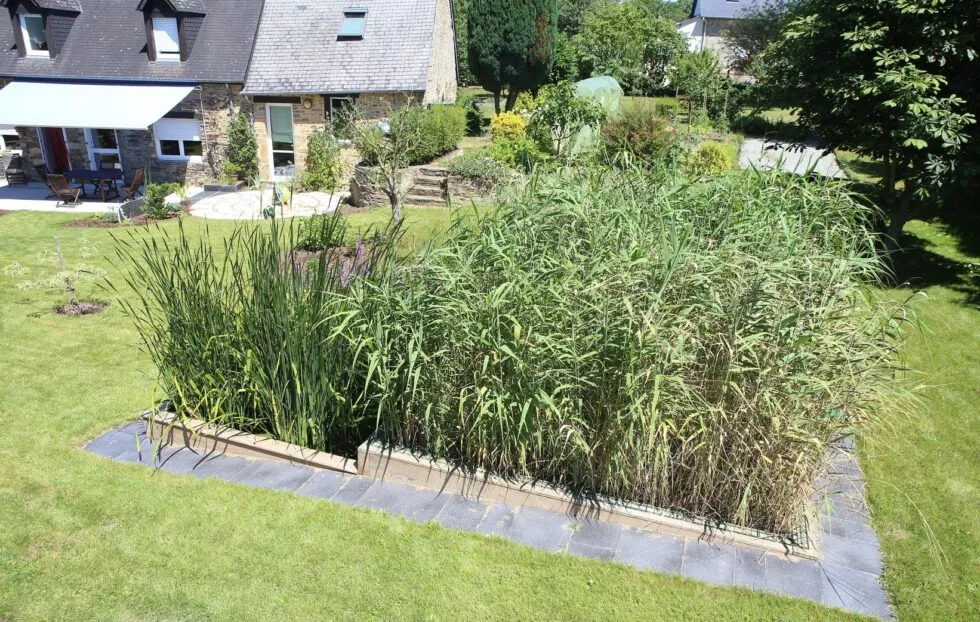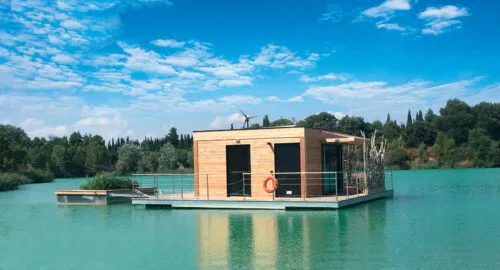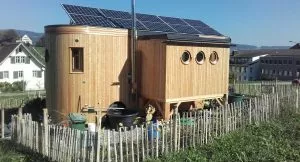Our products
Aquatiris is the first national network specialising in phyto-purification. Your Aquatiris expert will be able to recommend the solution that suits you best.

Phyto-purification, the only form of sanitation that you can visit!
“Have you seen these beautiful flowers? That’s my sanitation! Take a closer look!”
Sanitation is not a very well-known or very exciting field. But add plants and it changes everything!
Phyto-purification is the only wastewater treatment system that takes the form of a garden, perfectly integrated into your landscape. That’s why we quite naturally called them Sanitation Gardens and managed to combine usefulness with pleasure.
Visually, they are just flower and plant beds… And yet, all your wastewater (kitchen, toilets, bathroom, laundry, etc.) is treated right there in the garden, without a septic tank.
You’ll impress your friends and neighbours, so invite them for a visit!
And how does it work?
“No septic tank, no emptying”
All sanitation systems use the micro-organisms naturally present in the soil and in wastewater to ‘eat’ and digest what we throw away in the kitchen, bathroom, toilet, etc. Our waste is a resource for an entire living ecosystem!
In the Sanitation Gardens, what is less present is the tank, and that is good news for odours. There is also no more need to empty foul-smelling sludge! And what is more present are plants. So what is their role?
It is well known that soil without plants or organic matter becomes a desert of sand where few organisms can live: plants improve soil structure and enable life. In a phyto-purification system, the same process takes place: the wastewater passes through a bed of gravel, sand and plant roots, which provide an ideal living environment for a multitude of micro-organisms. These feed on our waste, and the more there is, the more they eat and therefore the less is left in the wastewater.
The plants also have a mechanical role that prevents clogging, the sworn enemy of sanitation. The action of the wind, the growth of the plants and the activity of the micro-organisms and earthworms allow the sand to be ‘in motion’ and always let the water through.
An eco-citizen approach
“With an efficient system”
Phyto-purification professionals are driven by the values of ecology and sustainability. Such a system offers many advantages:
- Products of local origin
- Experts and installers nearby
- The production of reusable compost on site
- A sustainable system to avoid redoing work
- An efficient installation all year round
- No odour nuisance




